Do you remember which version you first tried?
Autodesk’s 3ds Max is celebrating its 30th anniversary this year. The 3D modeling, animation and VFX tool has been through a number of incarnations – you might also know it as 3D Studio or 3D Studio MAX.
As I did for Nuke, I thought it would be fun to run down a history of 3ds Max in visual form, including both videos and imagery from the past three decades. Of course, there have been so many key contributors to Max from the very beginning through to today – this breakdown is not intended to be an exhaustive account of the software’s development.
Follow along as we go back in time with the 3D application. I’d be really interested to know which version of 3ds Max you might have first started using…
1988
Filmmaker Gary Yost and his engineering team at the Yost Group create a 3D Studio prototype. The new project was code-named THUD (after programmer Tom Hudson).
For a fulsome look back at the pre-history of the tool, check out these interviews with Gary Yost and Tom Hudson at CG Press. There’s also this look at the Atari-related origins of 3D Studio (via a tool called ‘Solid States’ that was created for Atari 8-bit machines and written in BASIC).
1990
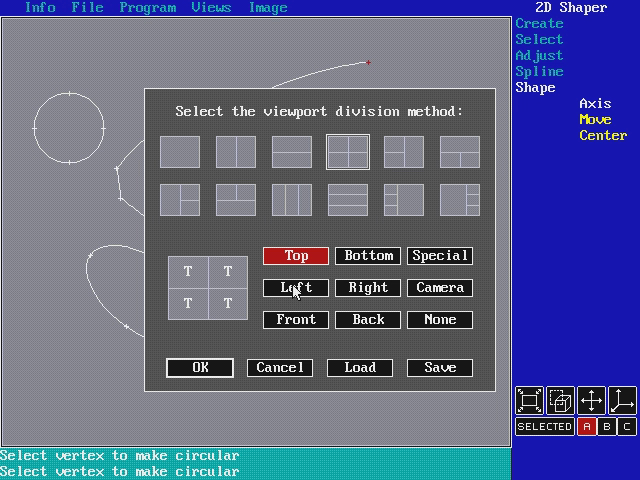
On Halloween, 3D Studio for the disk operating system (DOS) debuts. It was published by Autodesk. The app initially included four modules (Shaper, Lofter, Editor and Material Editor), and then a keyframing module.
1994

3D Studio R4 introduces aspects that foreshadow 3ds Max’s heavy plug-in architecture and marks the beginning of the third-party development community surrounding the software.
1996

Autodesk renames its multimedia division to Kinetix. 3D Studio MAX is the division’s flagship product. ‘Baby cha-cha’ goes viral, setting off the dancing baby animation craze. It was released in Autumn of 1996 as a product sample source file (sk_baby.max) with Kinetix’s Character Studio, and later found resurgence in an episode of Ally McBeal.
This year Autodesk releases 3D Studio MAX on the Windows 32-bit platform with real-time animation in the viewport. 3D Studio MAX R1.1 also introduces the inclusion of network rendering and the SDK, which opens the door to new plug-ins.
1997
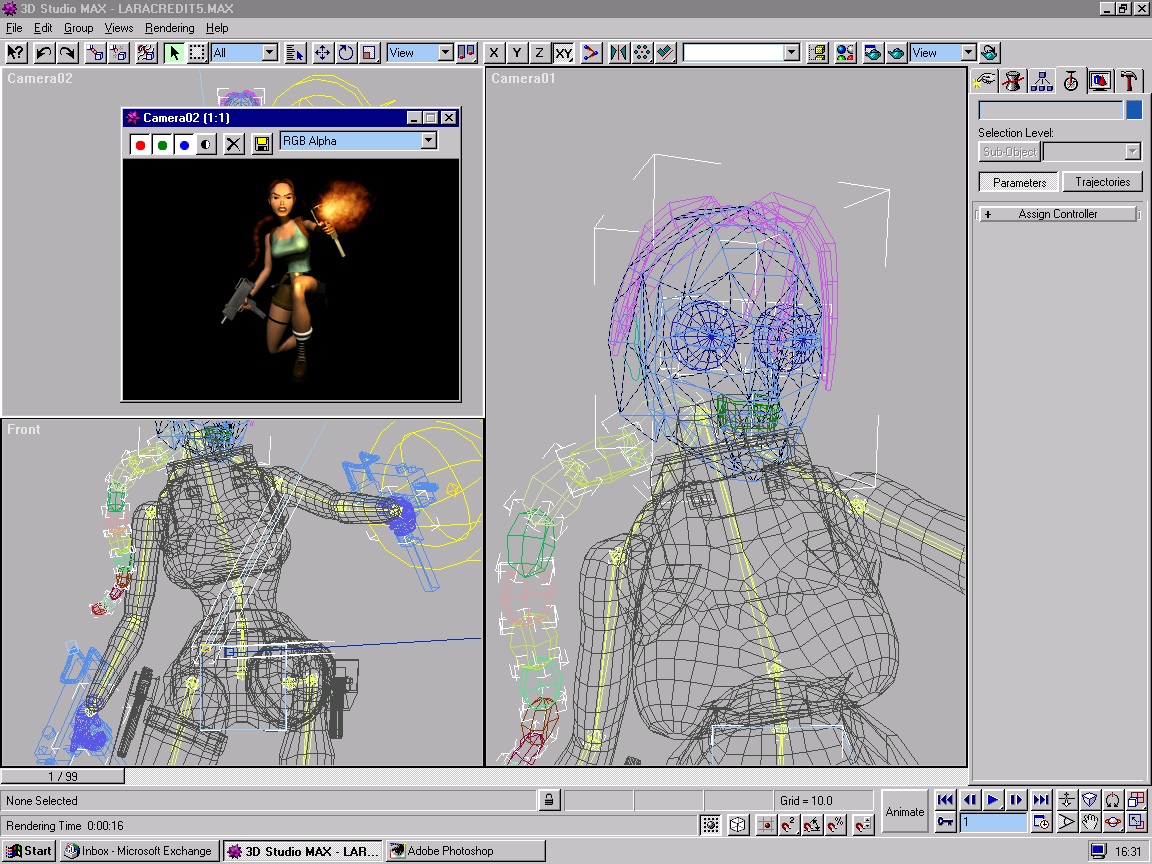
MAXScript makes its first appearance with the release of 3D Studio MAX R2. The computing language allows users to build tools on top 3D Studio MAX. MAX R2 was one of the largest releases in the history of the tool. Lost in Space is the first film to use 3D Studio MAX R2 for VFX. Tomb Raider II is released this year, in which cut scenes heavily utilize MAX.
2001

Discreet 3ds Max 4 hits the shelves, incorporating features gained through Autodesk’s 1999 acquisition of Discreet Logic, including the biped character studio that remains in the software today, an extensible character animation architecture, advanced game development tools, extensive rendering productivity with Active Shader, and more.
Short film Fifty Percent Gray, made with 3ds Max, is nominated for Best Animated Short Film at the Academy Awards. The first Halo video game is released, also created with the aid of 3ds Max.
2003
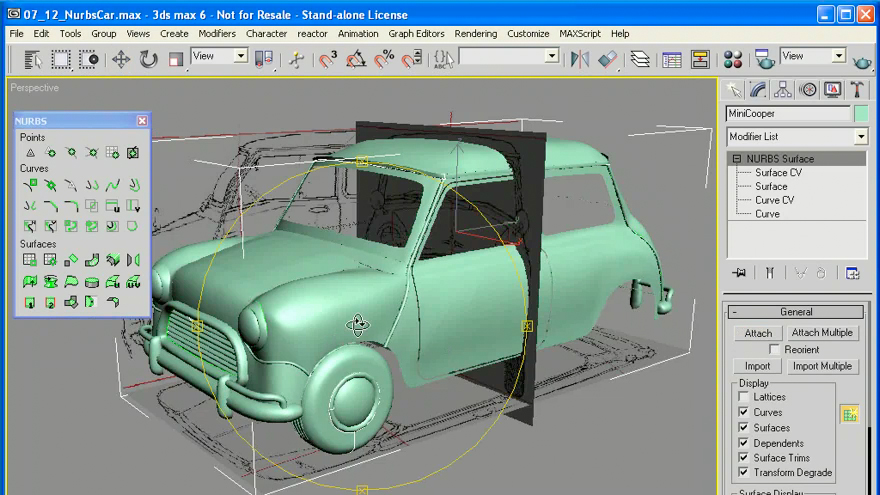
As the Mental Ray renderer gains traction among animation, VFX and game development professionals, Discreet 3ds Max 6 releases with Mental Ray support, among other new features like Particle Flow for particle simulations, which extends the product’s use for procedural animation.
Les Triplettes de Belleville, an animated feature made partly with 3ds Max, earns two Oscar nods, while Final Destination 2 shocks moviegoers with a massive auto crash set off by logs flying off the back a flatbed, an iconic shot created at Digital Dimension with 3ds Max.
2005

3ds Max 8 advances the software’s integrated character animation toolset (CAT) beyond Biped, enabling artists to create creatures with advanced rigging tools. The release also featured developments in motion mixing and motion retargeting, hair and fur, cloth, modeling and texturing, UV pelt mapping and DirectX and .fx support.
Gopher Broke from Blur Studio, a big user of 3ds Max, is nominated for the Best Animated Short Academy Award.
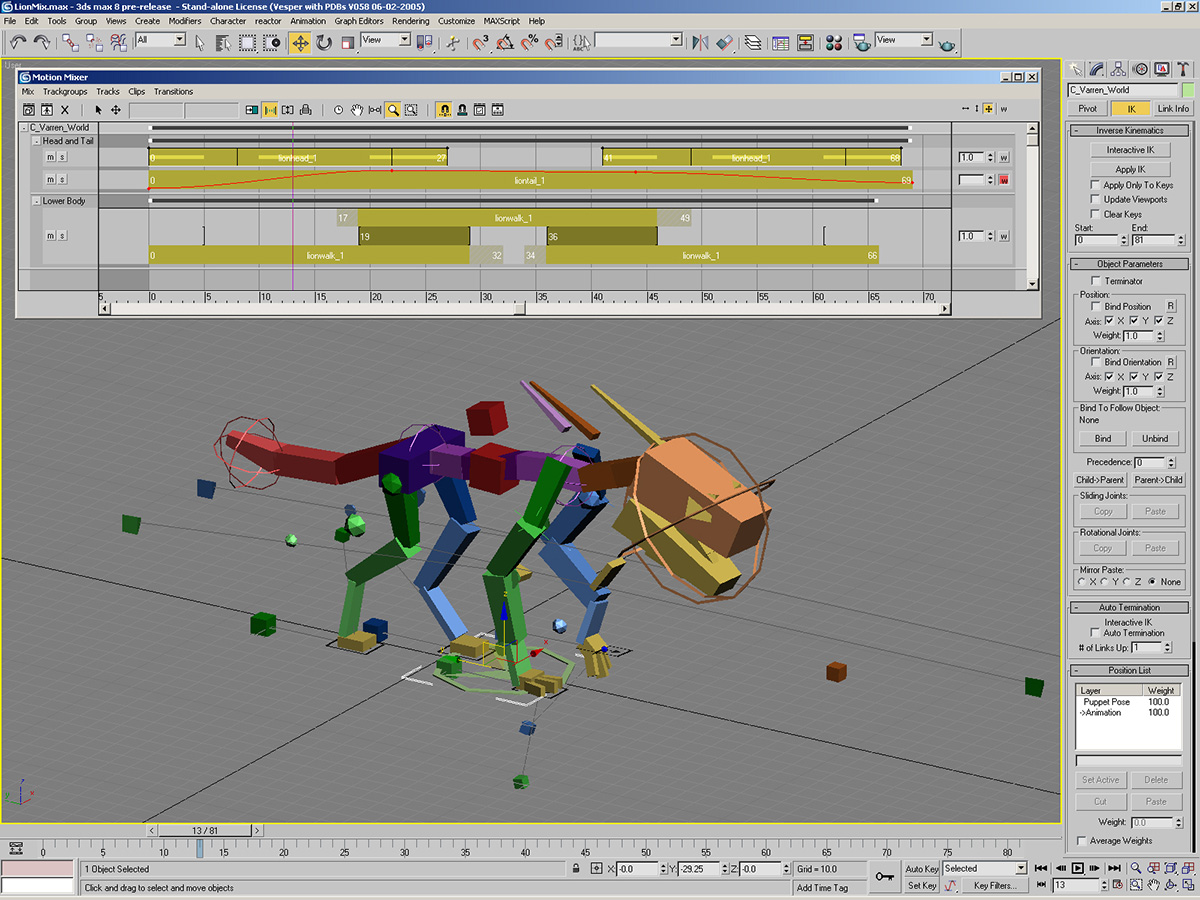
2006

64-bit support arrives for 3ds Max with the release of 3ds Max 9, allowing artists to more easily work with large data sets, while reducing the volume of rendering passes required.
3ds Max is used to visualize the new One World Trade Center using data from AutoCAD and Revit, and show off the largest domed structure at the time, the Dallas Cowboys Stadium.
2008

Autodesk launches 3ds Max Design 2009 for architecture, engineering and construction (AEC), a separate release from 3ds Max 2009 for animation and VFX. The releases feature a new ProMaterials asset library for simulating real-world surfaces, biped enhancements, new UV editing tools, improved OBJ and Autodesk FBX file format import and export and recognized scene-loading technology.
3ds Max takes home a Technology and Engineering Award in the Category of ‘Visual Digital Content Creation Tools and Their Impact’ from the National Academy of Television Arts and Sciences.
2010
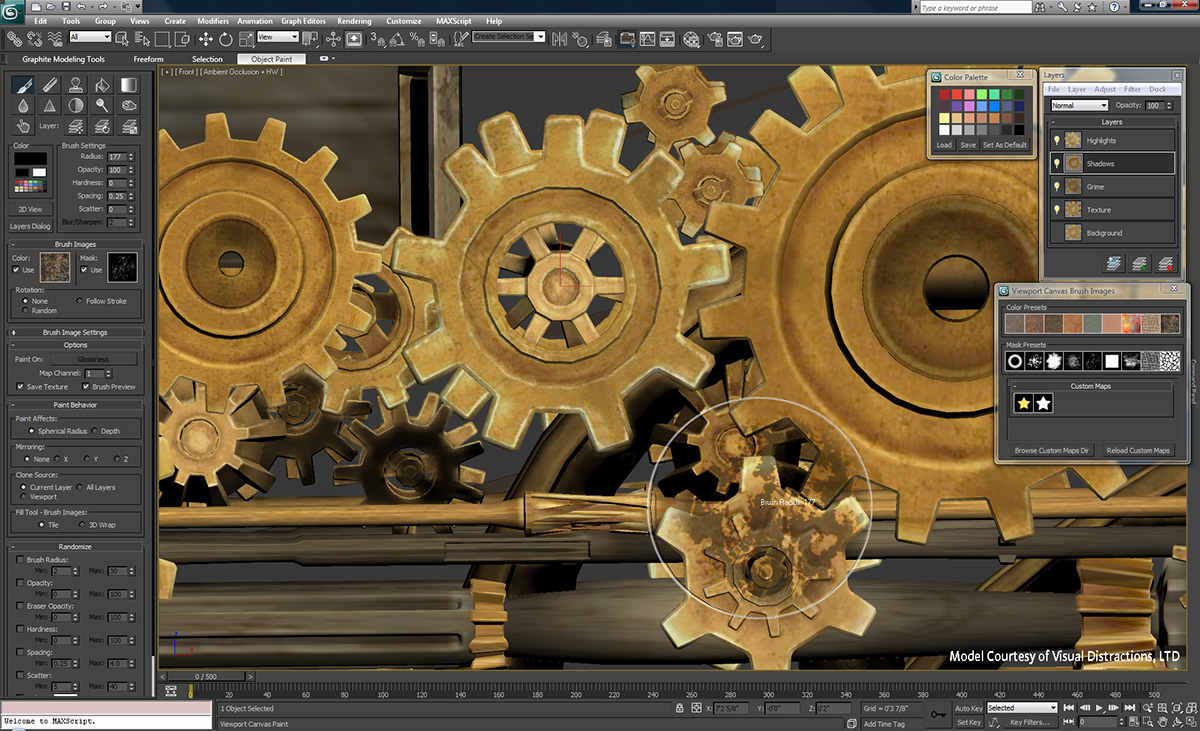
3ds Max’s Nitrous Viewport comes with the release of 3ds Max 2011 and 3ds Max Design 2011. The new feature makes it possible to generate imagery from the viewport that more closely mirrors the final render while also accelerating render times.
2012

3ds Max 2013 and 3ds Max Design 2013 deliver interactive rendering experiences for more iterative look development with ActiveShade support in Iray; a new render pass system.
2013
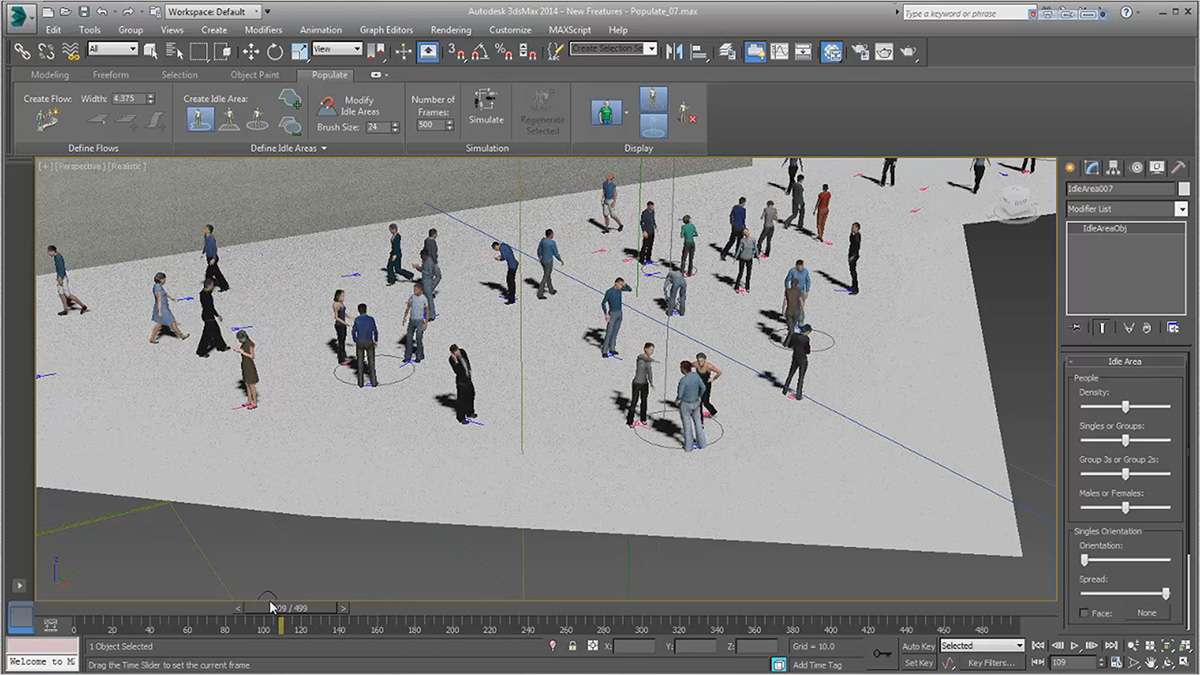
Increasing demand from artists and studios prompts the release of a new Populate feature in 3ds Max 2014 and 3ds Max Design 2014, making it easy to animate walk cycles and crowds for a more authentic look. The release also included expanded support for third-party plug-ins among other viewport performance enhancements.
2014

Python scripting arrives in 3ds Max 2015 and 3ds Max Design 2015, a release that also allows users to create more authentic assets using massive datasets captured with point clouds in an era when the technique of scanning real-world objects for modeling reference is catching on.
2015
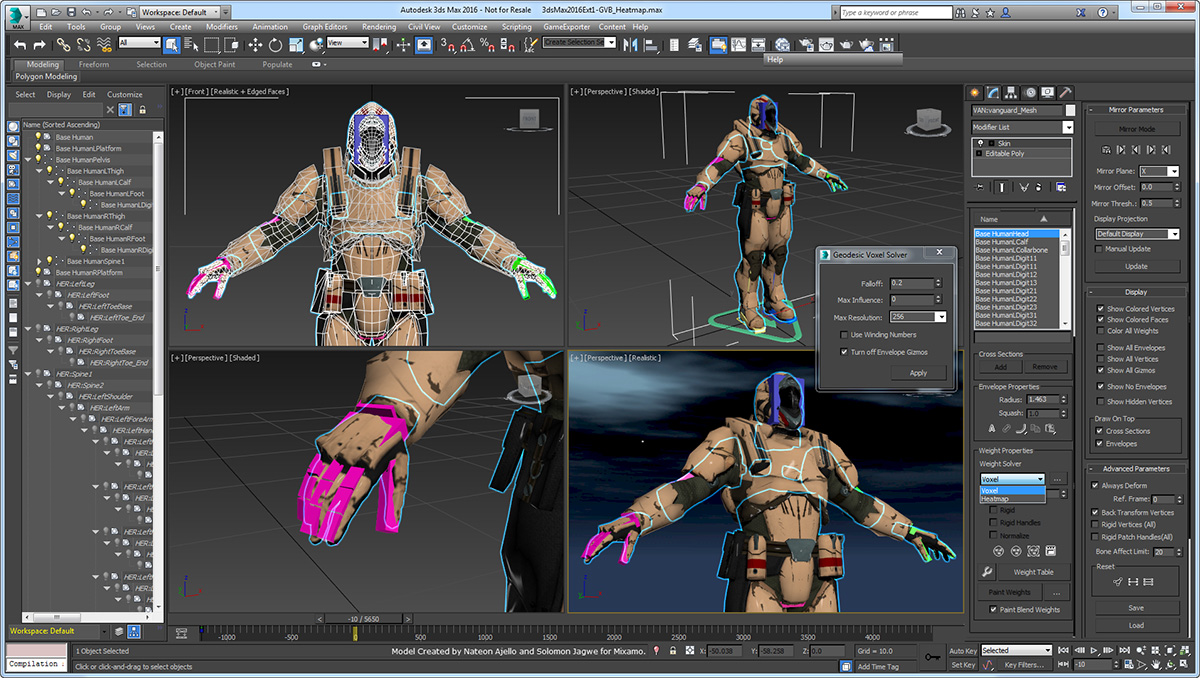
3ds Max 2016 brings it back to “One Max,” rolling features for both AEC and M&E into a single product, and introduces a new node-based Max Creation Graph toolset, support for non-destructive animation workflows in XRef, OpenSubdiv support, a new Design Workspace and on-demand template system, a new Camera Sequencer and more.
2017
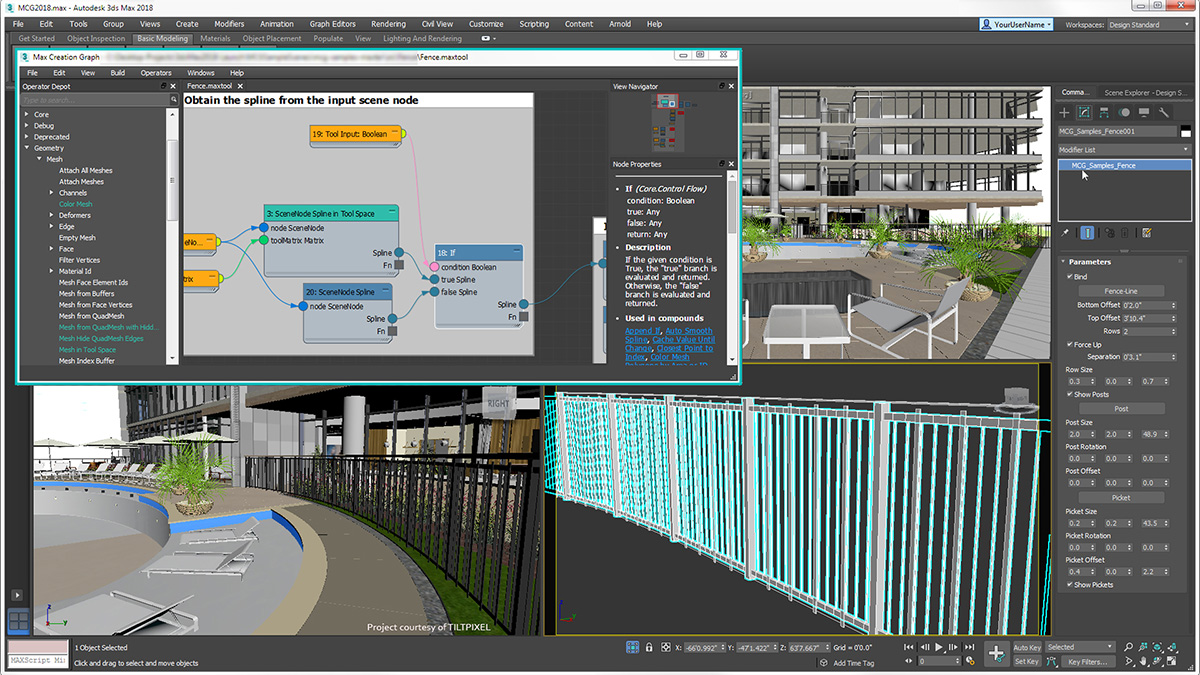
3ds Max 2018 debuts with features that address customer feedback including Smart Asset Packaging, customizable workspaces, Blended Box Map, MAXtoA 1.0 plug-in and Data Channel Modifier, motion paths for visualizing animation as a Bezier trajectory in the viewport and Max to Autodesk View (LMV) translation cloud services.
2018

Autodesk M&E embraces open source with 3ds Max 2019, adding Open Shading Language (OSL) support and improving the Alembic workflow. The release also includes a built-in Bifrost-based fluids system with presets for typically used fluid types, file I/O, MCG, and 11 new spline tools.
2019

3ds Max 2020 alleviates common detail modeling bottlenecks by introducing updated features for creating best-in-class chamfers procedurally and animation upgrades for generating previews from the viewport, along with better interop with CAD models, and more out-of-the-box procedural textures. Overall stability and performance enhancements also accelerate the content creation process.
2020
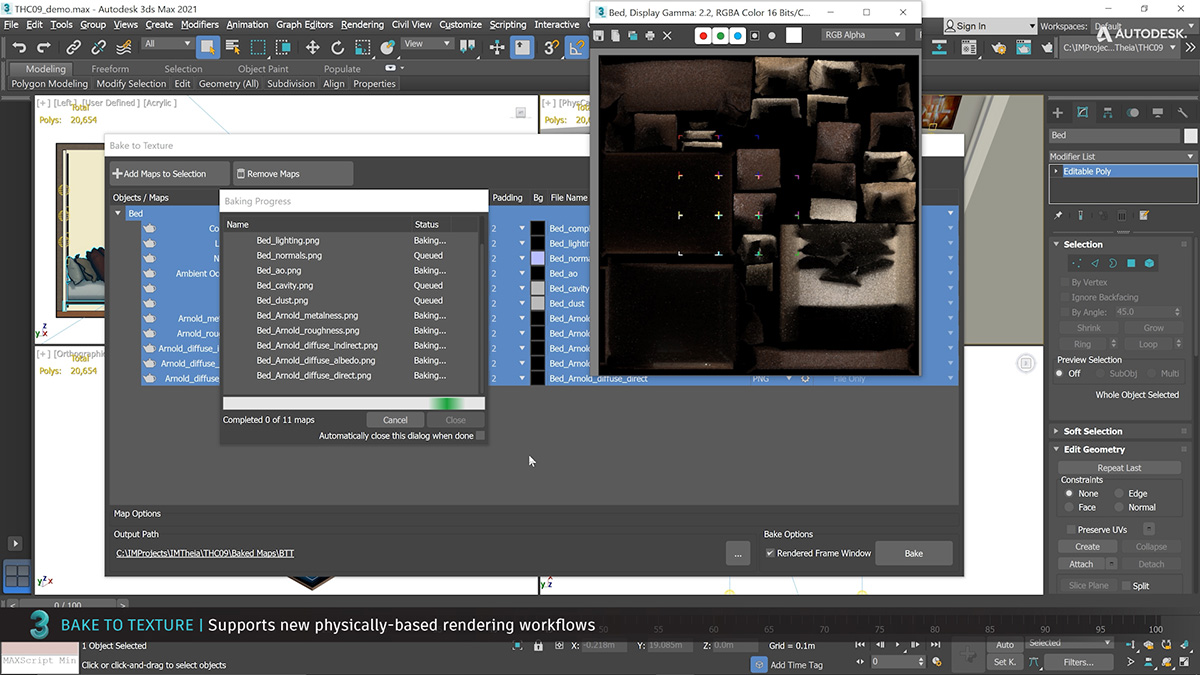
Autodesk 3ds Max 2021 introduces new tools for Texture Baking and Install, improvements to the Viewport and enhancements to Substance tools, ProSound and SketchUp import. Installation and rendering is made faster, while 3ds Max Python 3 us now set as default Python interpreter.
Autodesk also just released today 3ds Max 2021.1, which continues on a number of these enhancements. For more information on all the new things in 3ds Max, you can check out the 2021 public roadmap.
So, looking back at all these releases, which one did you start with? Leave your thoughts in the comments.






























Wow…..you brought me back million years ago my friend. My very touch with 3D was 1994 3D Studio v4. Stopped for 2 tears and when i restarted was 1996 3D Studio MAX. Huge difference. And on V2 Character studio! What a breakthrough at that time…..I think i still have some school “art” projects somewhere.
Thank you my friend for the trip
Same as Miltos, 3D Studio R4 but in 1996 for me. Thank you for this page, it makes it obvious that not much development as been made before they put their hands on Softimage 🙂
With version 2.0 a 386 and a math coprocessor!! Great times!! First time using it I tried generating a lens flare pointing a light to a camera. Of course it rendered pitch black time and time again.
I remember driving to kent state university to buy my first copy (i was in high school) and was crazy happy driving home, couldn’t wait to start installing the 30 disks. Still use it daily in my work.
…the saddest part is how much of those ’90s “features” still exist today with no change whatsoever…
Got my greasy hands on a copy of 3D Studio DOS v2 for the company’s 386, and was lost forever…….
After that I moved on to 3D Studio Max until version 4 or 5, then moved on to Softimage 3D and later XSI, Maya and Houdini.
Now I dabble with Blender for work. What an amazing journey, and what a changes in all those years. God.. I feel old 😀
Thanks! I started using max R2 and teaching max 4 in 1999 as a Discreet Training Specialist. I still teach max today to community college students!
Another 3ds r4 user here, thanks for the great article! As I look back I can remember another big step for 3ds, a great T-rex made with the revolutionary (for the time) meta-balls, maybe 97 or 98
Hehe, started to use 3DS under Dos !
Wow that was a trip down memory lane! I started my 3D career on a work placement where I learnt 3D Studio and Autodesk Animator for DOS. Fond memories of using 3D Studio R4 and then 3D Studio Max came out and changed everything. Great article.
very very very informing and interesting!
Started with DOS version 1 and have been using it for 30 years….30 YEARS!! Gosh, I’m old!
I used 3D Studio in Demoscene pipeline, see https://www.slideshare.net/TomaszBednarz1/design-art-science-and-demoscene
a great article!!
but: “Les Triplettes de Belleville, a short film made entirely with 3ds Max”
belleville is a cartoon feature animation. it may have some 3d parts, likely overdrawn by cartoonists (i saw it some 15 yrs ago, so i’m unsure about this aspect)
https://www.imdb.com/title/tt0286244/
please look at the trailer you linked 😀
or do you have any valid info about a 3d animated short with the same title?
Thank you for this – yes – that was a strange mistake I made about that film (which I love).
I was hired in 1990 as a QA Tester. I modeled a trombone with the lofter. I animated a Salvador Dali melting watch. I was responsible for suggesting we add black and white to the default colors. I was very lucky to get in on the ground floor, pre-release 1.
Oh wow, that’s really cool. Thanks for sharing.
I am still using 3ds max 2012. Am I really missing anything truly important in the newer releases?
I got 3D Studio 1.01 in 1992. It didn’t need a hardware lock. A picture file was corrupted so the installation needed a dos workaround. Still have a working copy of 3D Studio Max 1. The documentation books were very nice in those days.
Whoa! I started watching the ‘Max R2 Attract’ video and suddenly saw some of my work in it (n-Space). That was a super cool unexpected surprise. 🙂 My first brush with 3D Studio was in 1994 when I was working at EA Tiburon (video games). I also remember the guys from the team coming to show us the upcoming MAX, which was exciting. Good memories! I’m still using MAX today in 2021. Thanks for the fun article. 🙂
For fun, here is an old animation I did one of the early DOS versions in the early 90s. Cannot remember the exact version, but I remember trying the puppeteer IPAS plugin from Schreiber Instruments to animate the runners, but gave up and used scanned images from an Eadweard Muybridge book to align them over several frames to loop.
I started with 3DStudio R4 for the DOS platform in 1994. South Africa